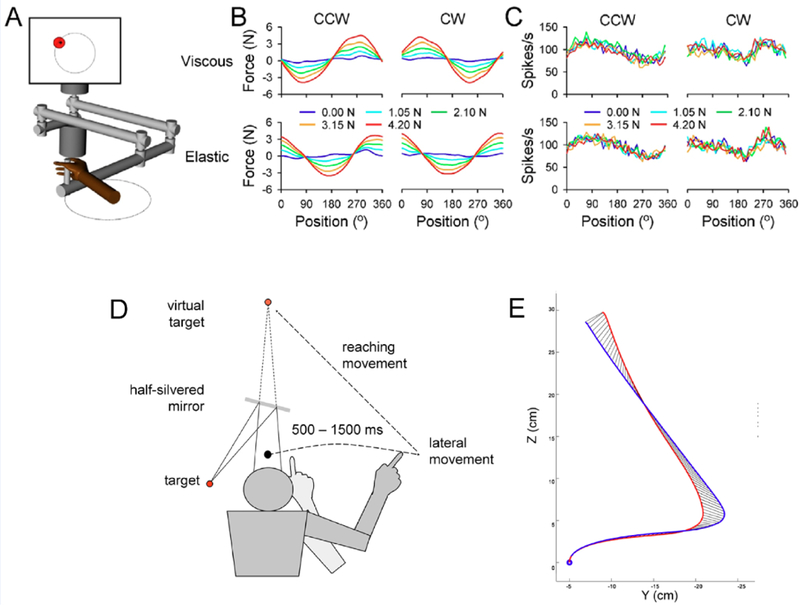Figure 2.

Cerebellum provides a kinematic forward internal model. A-C) Force fields effects on monkey Purkinje cell SS discharge during circular tracking. A) Monkeys use a robotic manipulandum to track a target moving circularly in viscous or elastic force fields. B) Forces at the manipulandum handle change dramatically with force field type and load. C) Simple spike activity correlates with the movement kinematics and not with the forces applied to the manipulandum. A – C adapted with permission from (Pasalar and others 2006). D-E) Effects of disrupting cerebellar function on arm state estimation. D) Subjects moving their arm left to right without visual feedback are instructed to reach for a known, fixed target by an auditory cue. D) Average arm trajectories for control trials (blue trace) and with transcranial magnetic stimulation over the ipsilateral arm region of the cerebellum (red trace). C and D adapted from (Miall and others 2007).
